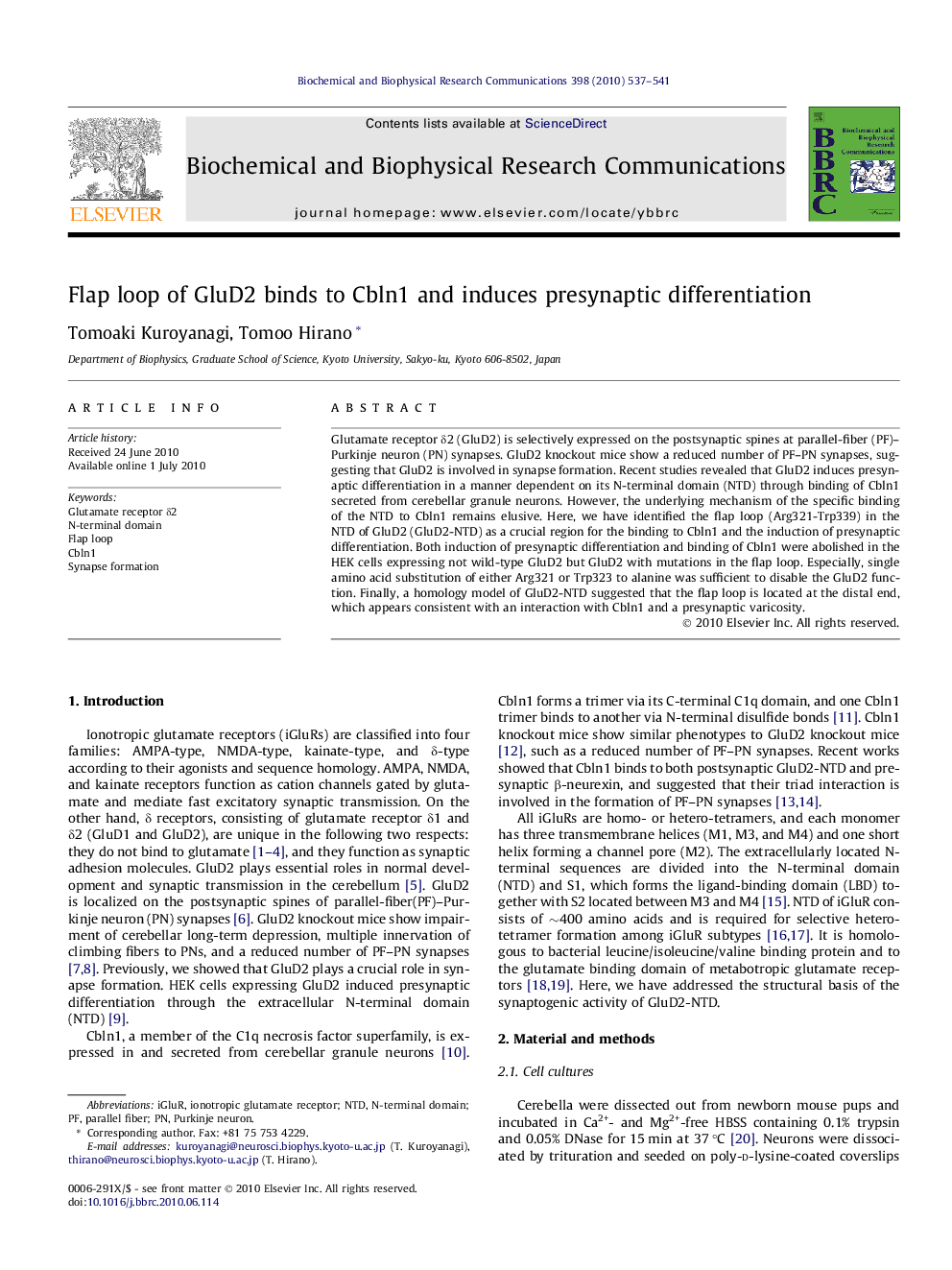| Article ID | Journal | Published Year | Pages | File Type |
|---|---|---|---|---|
| 1931578 | Biochemical and Biophysical Research Communications | 2010 | 5 Pages |
Glutamate receptor δ2 (GluD2) is selectively expressed on the postsynaptic spines at parallel-fiber (PF)–Purkinje neuron (PN) synapses. GluD2 knockout mice show a reduced number of PF–PN synapses, suggesting that GluD2 is involved in synapse formation. Recent studies revealed that GluD2 induces presynaptic differentiation in a manner dependent on its N-terminal domain (NTD) through binding of Cbln1 secreted from cerebellar granule neurons. However, the underlying mechanism of the specific binding of the NTD to Cbln1 remains elusive. Here, we have identified the flap loop (Arg321-Trp339) in the NTD of GluD2 (GluD2-NTD) as a crucial region for the binding to Cbln1 and the induction of presynaptic differentiation. Both induction of presynaptic differentiation and binding of Cbln1 were abolished in the HEK cells expressing not wild-type GluD2 but GluD2 with mutations in the flap loop. Especially, single amino acid substitution of either Arg321 or Trp323 to alanine was sufficient to disable the GluD2 function. Finally, a homology model of GluD2-NTD suggested that the flap loop is located at the distal end, which appears consistent with an interaction with Cbln1 and a presynaptic varicosity.
Research highlights► The flap loop of GluD2 is required for the induction of presynaptic differentiation. ► The flap loop of GluD2 is the binding interface with Cbln1. ► Arg321 and Trp323 in the flap loop are crucial for the above functions of GluD2.
